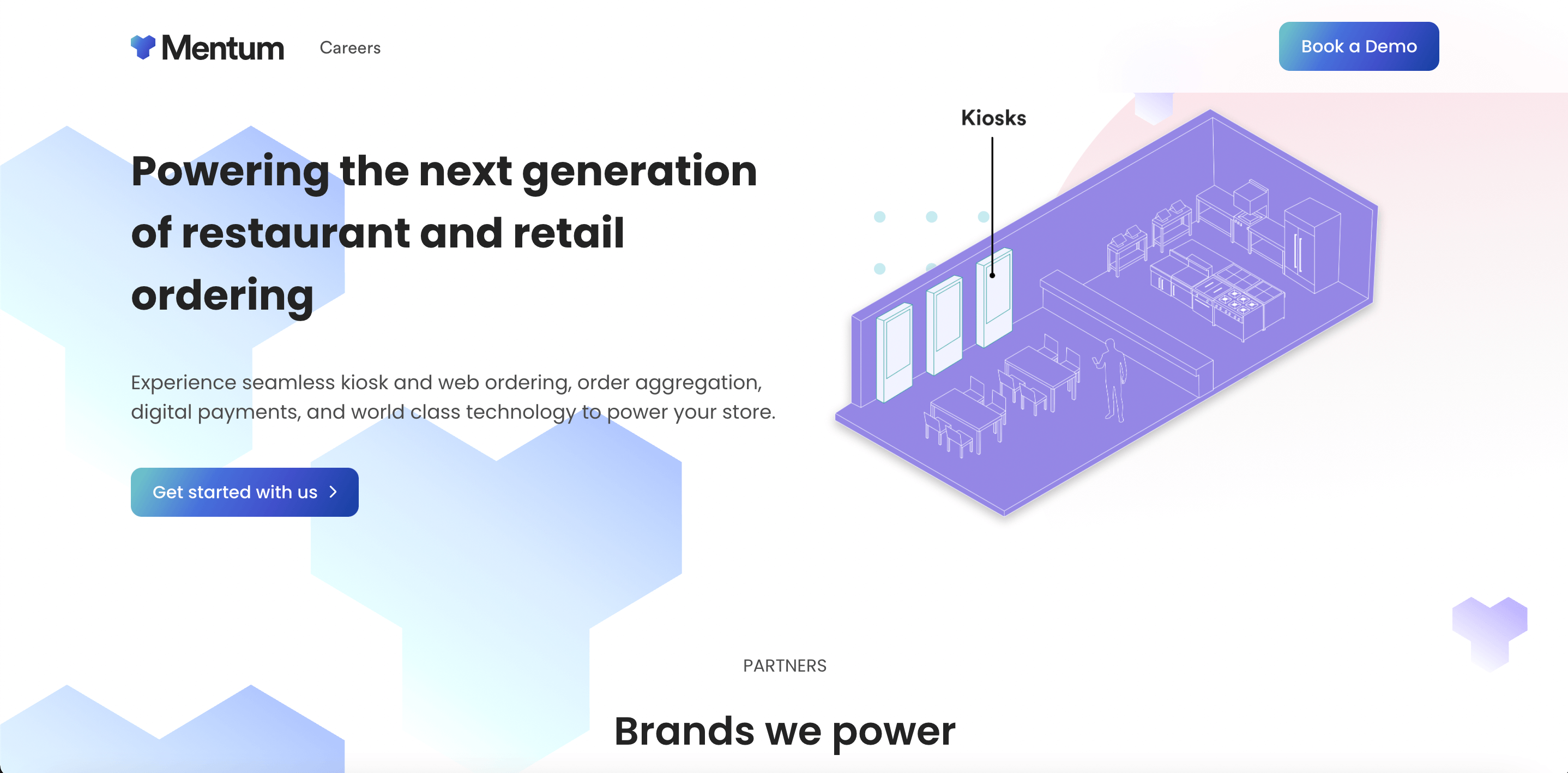
Mentum is a B2B restaurant and retail management platform that powers customer-facing kiosk payments and backend order aggregation for thousands of locations across North America. Some iconic brands they work with include Wal-Mart, Ben & Jerry's, Beyond Meat, Red Bull, and Hilton Hotels.
What is Mentum?
Mentum is a B2B restaurant and retail management platform that powers customer-facing kiosk payments and backend order aggregation for thousands of locations across North America. Some iconic brands they work with include Wal-Mart, Ben & Jerry's, Beyond Meat, Red Bull, and Hilton Hotels.

We sat down with Austin (Chief Technology Officer) and Lawrence (Chief Data Officer) to learn more about their work at Mentum, the technical challenges they've faced, and the impact webapp.io had on their software development team.
Watch the full video testimonial below:
The Challenge:
Scaling to thousands of retail locations demands for quick software iterations. Recently the Mentum team collaborated on building a credit card reader, with native Android code and its interaction with the USB serial interface. Prior to implementing webapp.io, only Github Actions was used to automate the building of Docker images, which made deployment inefficient with technical limitations to building custom pull request workflows.
The Process:
webapp.io's technical customer success team alongside Mentum's CTO Austin collaborated to create a faster and easier development workflow that can scale with them as they continue to grow in customer locations and developer team size.
Before webapp.io:
- Polyrepository infrastructure
- Tech stack: PostgreSQL (backend), React (frontend), GitHub Actions
Challenges:
- Technical: Limited testing resources meant the engineering team was experiencing technical limitations that hindered their progress. There were not enough cycles for the engineering team to invest so much time into infrastructure automation, but a technical solution was overdue
- Hiring: Wanting to scale team size and technology with the right infrastructure in place - i.e. launching kiosks over thousands of new locations and onboarding new developers quickly
After using webapp.io:
- Polyrepository infrastructure
- Tech stack: PostgreSQL (backend), Migrating to React Native (frontend)
- Implementation of webapp.io allowed developers to run complex integration tests in parallel
webapp.io solutions:
- Pull request automation workflows: now when software engineers push changes, they have an easier pull request workflow that automates CI/CD tests and conduct QA feedback
- Unopinionated for tech stacks: allowed the team to change technology stacks easily without lock-in
Getting long term adoption from Mentum's software developers:
After the initial setup of webapp.io over a year ago, Mentum's CTO Austin mentioned how easy it was to teach his developer and data science teammates such as Lawrence how to leverage the new technology. Austin describes webapp.io's technology as "...following very closely to how Docker works. The syntax is pretty similar, the flows are pretty similar." With over 13M Docker users worldwide, the familiarity of the Docker syntax was a big proponent for making webapp.io easy to use and adopt.
Why did they choose webapp.io?
From the perspective of the CTO of Mentum:
“webapp.io enabled us to go with a more complete CI flow. It solved a lot of problems on the developer productivity side making sure everything's automated and working.
- Austin J., Chief Technology Officer
